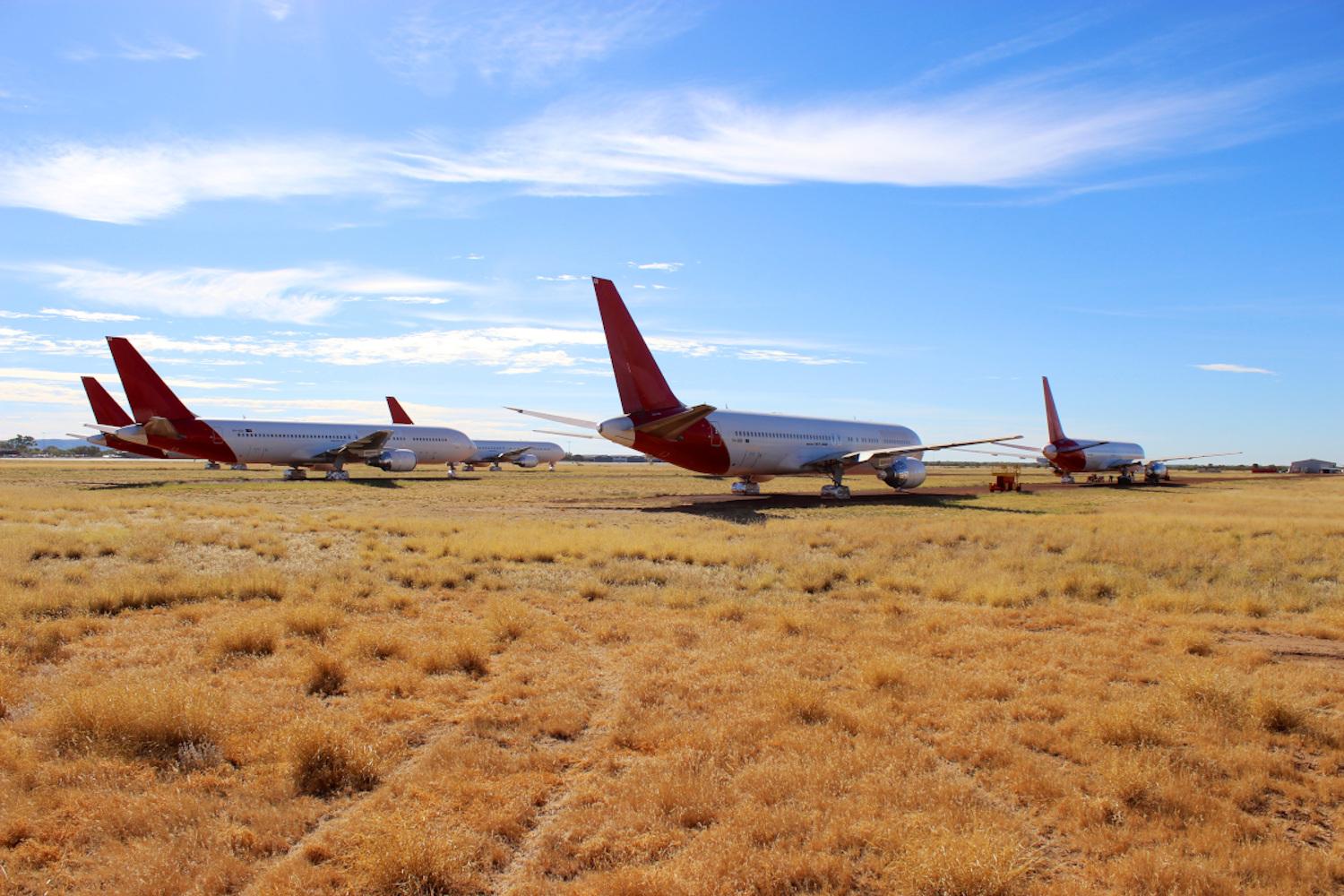
Fast-growing Asian carriers are not used to grounding jets, and most of the Asia-Pacific region does not have, like the western U.S., vast dry deserts.
“Everyone’s trying to find parking for aircraft now,” says Tom Vincent, managing director of Asia Pacific Aircraft Storage (APAS) in the Australian desert. Even though Australia’s domestic flights have not been banned, there has been a major drop and only a limited recovery is expected in about eight weeks. Virgin Australia has grounded its fleet, and only charter or repatriation flights are operating internationally.
Major carriers like Qantas and Virgin are mostly parking aircraft at airports for now. But Vincent expects more jets will seek a more economic and longer-term home. APAS is storing 19 aircraft now and expects six more to arrive April 26. The site is expanding its facilities to store 70 aircraft in three weeks and will then increase capacity to 100.
“We expect to fill up,” Vincent says. Most of APAS’s storage customers are non-Australian airlines, and most jets will be going for medium- or long-term storage. That means full preservation of engines, lubrication of flight-control surfaces and landing gear, cabin protection, avionics work and other tasks. The aim is asset preservation. Vincent predicts some jets will ultimately be torn down, but “that is not our focus now.”
APAS gets its international customers because, outside the Australian desert, most of Asia-Pacific is wet and humid, hardly ideal for storing aircraft.
Hong Kong-based Aircraft Recycling International has an aircraft recycling site in northern China at Harbin Taping International Airport that has apron parking for up to 14 widebody and narrowbody aircraft. It also can tear down up to 20 aircraft per year.
According to IBA, China still had almost 700 aircraft parked at airports more than 14 days on April 13, about the same count as on March 3. That means that the partial recovery in China’s daily flights has so far been supported by higher utilization of operating aircraft, rather than putting grounded aircraft back in service.
IBA regards China as 2-3 months ahead of the rest of the world in first undergoing and more recently starting to recover from the coronavirus crisis. So that pattern, flying operating aircraft more intensely rather than pulling grounded aircraft back in the air, may repeat itself as other nations begin recovery later this spring, summer or fall.
In addition to storage and teardown capabilities, APAS is a Part 145 repair station, certified by domestic and international regulators. It can do all the necessary work for both storage and return to service.





